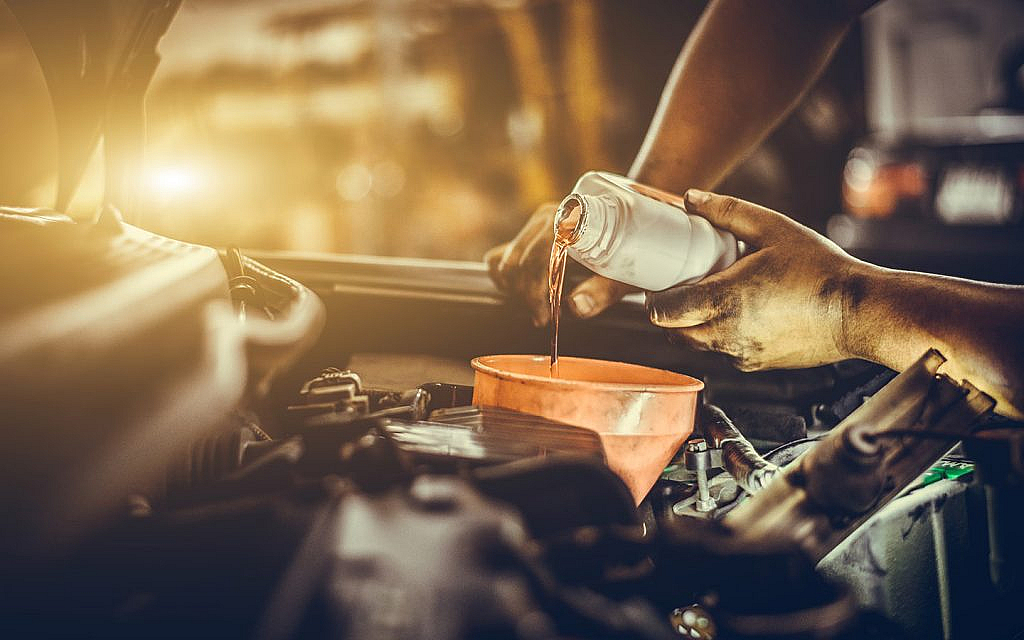
An engine develops the sludge on or around the car’s motor when oil breaks down and starts being collected by the engine. For the engine to work optimally, it is necessary to clean engine sludge. The most important thing for a motor engine’s longevity is the circulation of quality oil. In simple words, oil is like the lifeblood of an engine that cleans and lubricants various engine parts and helps make its movement friction-free. Motor oil also helps the engine from overheating.
What causes oil sludge?

Over time the breakdown of engine oil causes engine sludge. Usually, sludge accumulates within the engine because of low operating temperature, a crankcase ventilation system with a poor or lousy design, crankshaft-induced cavitation or internal water leakage. Other common causes leading to engine sludge include:
- Infrequent oil changes: Not changing the oil on time or extending oil change intervals causes an oil breakdown and forms sludge.
- Low-quality oil: Using low-quality or incorrect viscosity oil can accelerate sludge formation.
- Short-trip driving: Consistently driving short distances without allowing the engine to reach optimal operating temperature can promote sludge buildup.
- Contaminants: Dust, dirt, and other contaminants entering the engine can mix with oil and contribute to sludge formation.
- Combustion byproducts: Combustion byproducts, such as soot and carbon, can mix with oil and lead to sludge formation.
Symptoms of Engine Sludge

Carry a regular oil check to avoid clumps. Look through your engine to identify the accumulation of sludge by removing the valve cover. Failing to do so will clump the engine oil and clog the entire working system of the car’s engine. Go through the symptoms of and process on how to clean engine sludge to evade expensive engine repairs.
- Poor engine performance: Sludge restricts the oil flow and naturally leads to reduced lubrication and increased friction, resulting in poor engine performance.
- Overheating: Engine sludge buildup can interfere with the cooling system. This causes the car’s engine to overheat.
- Reduced fuel efficiency: Sludge can also have a negative effect on the fuel-air mixture and combustion process, resulting in decreased fuel efficiency.
- Oil pressure warning light: Sludge buildup can obstruct the oil passages, which triggers the oil pressure warning light on the dashboard.
- Knocking or tapping noises: Insufficient lubrication because of engine sludge can cause metallic components to rub against each other, producing knocking or tapping noises and ultimately causing wear.
Steps to Clean Engine Sludge

Cleaning engine sludge is necessary for optimal performance, smooth operation and maintenance. Let’s go through the steps to clean engine sludge effectively.
- Prepare the engine: Make sure the engine is cool and parked on a flat surface before you start to clean engine sludge. Block the rear wheels so that car doesn’t move when you’re working under it. Also, disconnect the battery to prevent accidental starts.
- Jack up the car: After the car is parked in a safe place, jack it with a floor or hydraulic jack to slide under the vehicle easily and carry out the work. Here are the steps to properly jack up your car.
- Drain old oil: Locate the oil drain plug, it is positioned on the bottom of the engine oil pan. Drain the old oil into a suitable container and then remove and replace the oil filter as well.
- Add engine flush solvent: Purchase a good quality engine flush solvent from an auto parts store. Follow the instructions on the product label and add the recommended amount to the engine oil fill cap.
- Run the engine: Start the engine and let it idle for the specified duration mentioned on the engine flush solvent instructions. This circulates the solvent throughout the engine and helps break down the sludge.
- Drain the solvent: After the recommended duration, drain the solvent. Turn off the engine and allow it to cool down. Then, position a drain pan beneath the oil drain plug, remove the plug, and drain the engine flush solvent.
- Replace oil and filter: Install a new oil filter and refill the right type of engine oil with fresh engine oil of the recommended grade and viscosity. Also, ensure you don’t overfill oil in the vehicle as that can also damage the engine.
- Start the engine: Start the engine and let it run for a few minutes to ensure proper oil circulation.
- Regular maintenance: To prevent future sludge buildup, adhere to the manufacturer’s recommended oil change intervals and use high-quality oil and filters. Regularly inspect and maintain other engine components, such as the PCV (Positive Crankcase Ventilation) system and clean engine sludge when necessary.
That is all about how to clean the engine sludge, engine oil sludge causes and its symptoms. Please note that intense sludge buildup may require professional help or an engine disassembly for thorough cleaning. If you experience persistent engine sludge issues, consult a trusted mechanic to clean engine sludge.
Besides, if you are continuously paying for expensive engine expenditure, it is advisable to buy another car with a proper engine. Go through this list of used cars for sale in the UAE and have your pick. Here is how to buy a car from dubizzle.
Stay tuned to dubizzle’s top auto blog for more on engine parts, DIY solutions, repair tips and much more.